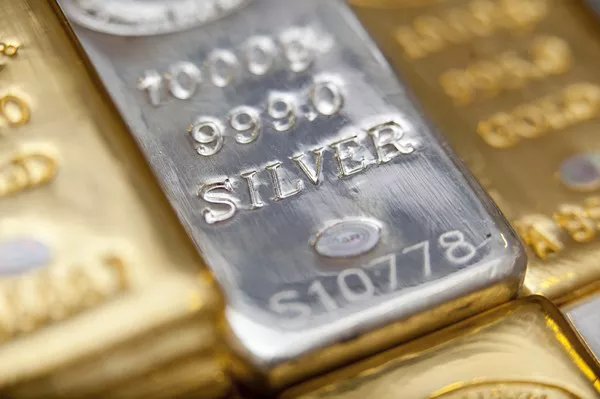The price of silver has always been subject to fluctuations due to various economic, geopolitical, and market factors. Investors and enthusiasts closely monitor silver as a precious metal, considering its potential as a store of value and a hedge against inflation. In this in-depth analysis, we will examine the key factors that influence the price of silver and assess whether it is expected to rise in the near future.
-
Supply and Demand Dynamics:
One of the fundamental factors affecting the price of silver is the interplay between supply and demand. Silver is utilized in various industries, including electronics, jewelry, solar panels, and medical equipment. Changes in industrial demand can have a significant impact on silver prices. For example, the increasing adoption of solar power and electric vehicles creates a growing demand for silver in the production of photovoltaic cells and batteries. Additionally, investment demand for silver in the form of exchange-traded funds (ETFs) and physical bullion plays a role in price fluctuations. Any imbalance between supply and demand can result in price movements.
-
Global Economic Conditions:
The state of the global economy has a direct correlation with silver prices. During times of economic uncertainty, investors often turn to safe-haven assets like silver. Economic indicators such as GDP growth, inflation rates, interest rates, and currency values influence investor sentiment and their demand for silver. A robust economy and positive market outlook can boost industrial demand for silver, potentially driving up its price. Conversely, economic downturns or recessions may lead to reduced demand for silver in industrial applications, putting downward pressure on prices.
-
Geopolitical Factors:
Geopolitical events and tensions can impact the price of silver. Political instability, conflicts, trade disputes, and economic sanctions can create uncertainty in financial markets, leading to increased demand for silver as a safe-haven asset. Moreover, geopolitical developments can affect mining operations and disrupt the supply of silver, influencing its price. For example, labor strikes, nationalization of mines, or regulatory changes in major silver-producing countries can affect the global supply and prices.
-
Inflation and Currency Movements:
Silver has historically been considered a hedge against inflation. When inflation rates rise, the purchasing power of fiat currencies decreases, making tangible assets like silver more attractive. Investors often turn to silver as a store of value to protect their wealth. Changes in currency values, particularly in major economies, can also impact silver prices. A weaker currency can drive up the price of silver, making it more expensive for investors in that particular currency. Conversely, a stronger currency may exert downward pressure on silver prices.
-
Central Bank Policies and Monetary Stimulus:
The monetary policies implemented by central banks, such as interest rate decisions and quantitative easing measures, can influence silver prices. Lower interest rates and expansive monetary policies generally create an environment conducive to precious metals, including silver. These policies can increase liquidity in the markets and potentially drive up demand for silver as an alternative investment. Conversely, tighter monetary policies and higher interest rates may have a dampening effect on silver prices.
-
Technological Advancements:
Technological advancements have a significant impact on the demand for silver. Silver’s unique properties, such as high electrical and thermal conductivity, make it a crucial component in various industries. The increasing adoption of renewable energy technologies, electronic devices, and medical equipment fuels the demand for silver. For example, the growth of the electric vehicle industry and the need for efficient energy storage systems are driving the demand for silver. Technological advancements and innovations can contribute to the long-term growth in silver prices.
-
Environmental and Sustainability Factors:
Growing concerns about environmental sustainability and responsible sourcing have also influenced the silver market. There is increasing demand for ethically and sustainably sourced silver, driven by consumer preferences and corporate responsibility initiatives. This shift in demand can have an impact on the price of silver, as companies and consumers prioritize sustainable practices and seek transparency in the supply chain. Ethical mining practices and environmentally friendly extraction methods may become more important factors influencing the market value of silver in the future.
-
Market Sentiment and Speculation:
Market sentiment and speculation can significantly influence the price of silver in the short term. Investors and traders closely monitor market trends, technical indicators, and trading volumes to make trading decisions. Speculative buying or selling can create price volatility, as investors try to capitalize on short-term price movements. It is essential to note that market sentiment can change rapidly, and short-term price predictions based solely on market sentiment can be challenging to accurately forecast.
Conclusion:
Predicting the future price of silver is a complex task influenced by numerous factors. While analyzing the key factors mentioned above can provide insights into potential price movements, it is important to remember that the silver market is subject to volatility and unpredictability. Factors such as supply and demand dynamics, global economic conditions, geopolitical events, inflation rates, currency movements, central bank policies, technological advancements, sustainability considerations, and market sentiment all contribute to the price fluctuations.


